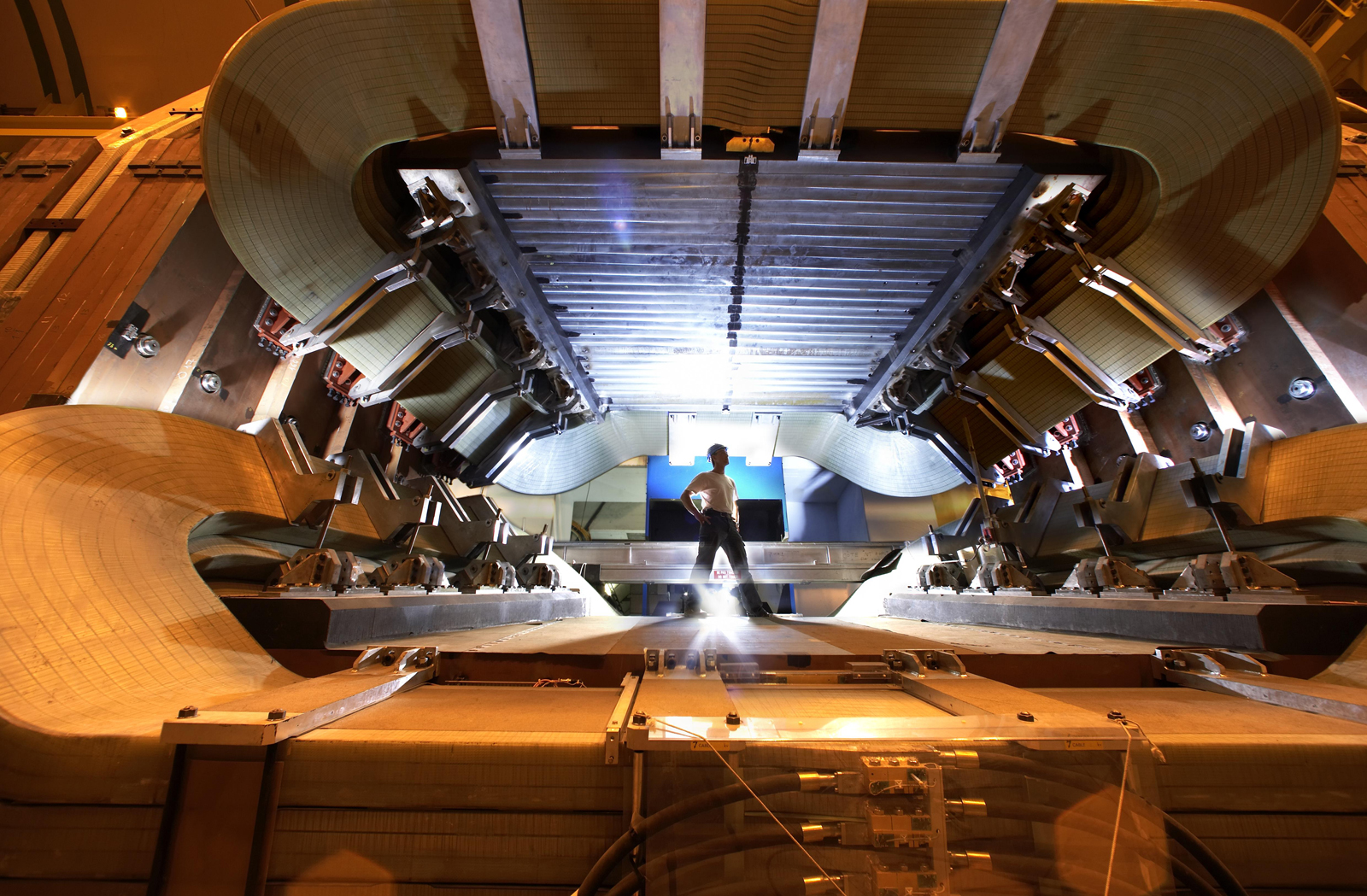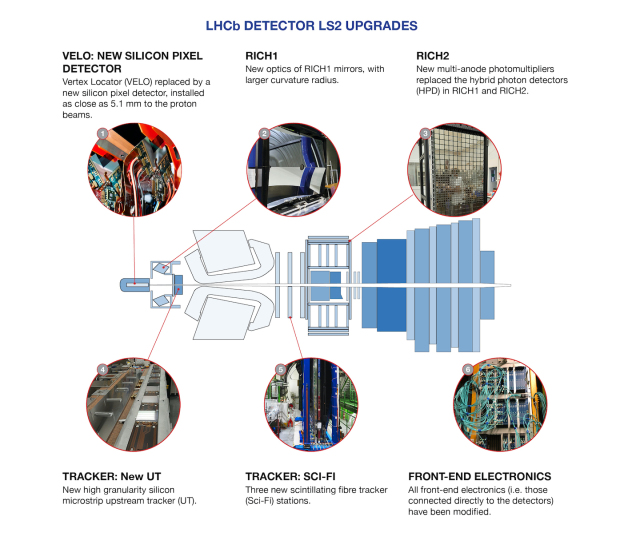Taking a closer look at LHC
|
The LHCb detector (Large Hadron Collider beauty experiment) is a21m long, 10m high and 13 m wide detector and it’s designed to study CP violation and other rare phenomena in decays of hadrons with heavy flavours, in particular B’s mesons. |
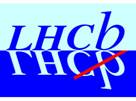 |
Interest in CP violation comes not only from elementary particle physics but also from cosmology, in order to explain the dominance of matter over antimatter observed in our universe, which could be regarded as the largest CP violation effect ever seen. The LHCb experiment will improve significantly results from earlier experiments both quantitatively and qualitatively, by exploiting the large number of different kinds of b hadrons produced at LHC.
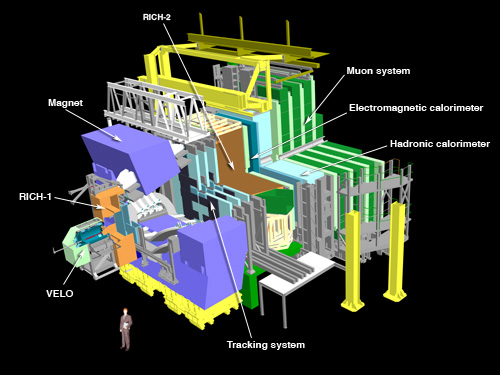
At each Long Shutdown (LS) the various accelerators, detectors and other devices undergo major maintenance, consolidation and upgrade operations.
Along with ALICE, LHCb had some of the most major experimental upgrades during the long shutdown LS2.
Scientists installed a new detector called SciFi, made from 10000 kilometers of optical fiber. They also installed a new and faster Vertex Locator (VELO), a detector that will sit as close as possible to where the particles collide. What makes the new VELO detector unique is that scientists can lift it out of the way as they prepare the particle beams for collisions, then move it mechanically into place when LHCb is ready to collect data. This will allow scientists to capture clear information from the first particles that radiate from the collisions without unnecessary wear and tear from the beam.
In addition, LHCb scientists have implemented a new data-acquisition system, which will allow them to more quickly and precisely reconstruct what transpired during particle collisions.
[These comments are taken from What’s new for LHC Run 3? By Sarah Charley. Symmetry (A joint Fermilab/SLAC publication)]
A further upgrade of the LHCb detector, known as Upgrade II, is planned to allow LHCb to operate at a much higher instantaneous luminosity and cope with the demanding data-taking conditions of the High-Luminosity LHC (HL-LHC). The latest technological developments will be taken into account to design the new detectors.

Maintenance of the electromagnetic calorimeter (Image: LHCb collaboration)
The new revolutionary electromagnetic calorimeter being developed for LHCb Upgrade II will be able to precisely measure the arrival time of electromagnetic particles. Its test measurements demonstrated detection of high-energy electrons within 20 picoseconds of precision. This is the first time that such excellent performance has been achieved with an electromagnetic calorimeter in particle physics. The new calorimeter will have finer granularity, enabling it to cope with a much higher particle density at higher instantaneous luminosity.
The image below shows some of those performed on LHCb during or LS2 (2019-2022).
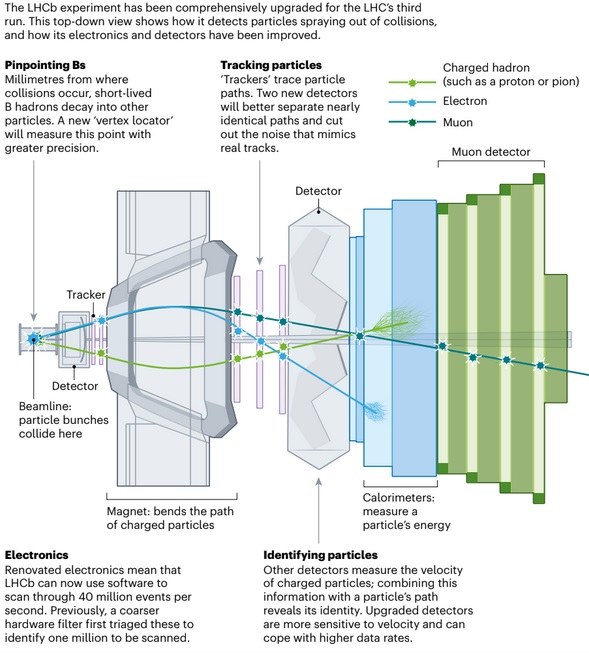
|
AUTHORS Xabier Cid Vidal, PhD in experimental Particle Physics for Santiago University (USC). Research Fellow in experimental Particle Physics at CERN from January 2013 to Decembre 2015. He was until 2022 linked to the Department of Particle Physics of the USC as a "Juan de La Cierva", "Ramon y Cajal" fellow (Spanish Postdoctoral Senior Grants), and Associate Professor. Since 2023 is Senior Lecturer in that Department.(ORCID). Ramon Cid Manzano, until his retirement in 2020 was secondary school Physics Teacher at IES de SAR (Santiago - Spain), and part-time Lecturer (Profesor Asociado) in Faculty of Education at the University of Santiago (Spain). He has a Degree in Physics and a Degree in Chemistry, and he is PhD for Santiago University (USC) (ORCID). |
CERN CERN Experimental Physics Department CERN and the Environment |
LHC |
IMPORTANT NOTICE
For the bibliography used when writing this Section please go to the References Section
© Xabier Cid Vidal & Ramon Cid - rcid@lhc-closer.es | SANTIAGO (SPAIN) |



